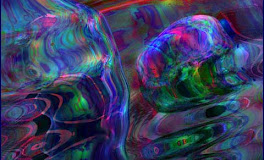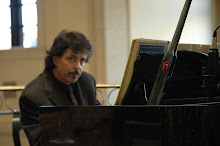The press have woken up to lucid dreaming!
Media reports have appeared all around the world on the fantastic experiences of lucid dreaming. Here are extracts from just a few of them...
Writer overcomes block to obtain PhD
Beverly D'Urso has been lucid dreaming for 35 years and urges others to respond in new ways to their waking life. Through lucid dreaming Beverly overcame a case of writer's block and was able to obtain per Ph.D".
'I learned to use my dreams to improve my life. I was supposed to write a proposal on artificial intelligence for my Ph.D., but I was suffering from writer's block.
'I decided to use lucid dreaming to aid me in my waking life. I tried to write the proposal in a dream, but instead I had a different dream: I was in my bedroom and I noticed that my computer was on the right side of the room, instead of the left. Oh, I said to myself, I must be dreaming. Good! Then I gave myself the goal of working on the proposal. I noticed there were flames coming out of my chair, and leading to a dark tunnel. I told myself, I don't have to be scared. This is my dream. I'm safe in bed.
Studies have shown that lucid dreaming can have curative powers, too. According to a study at the University of Texas, South-Western Medical Centre, in Dallas, lucid dreaming can elevate the level of natural killer cells in the blood.
-- First magazine
Lucid dreamers communicate with the waking world
Dream researcher, Stephen LaBerge sent veteran lucid dreamers into the dreamworld with precise instructions on how to use eye movements to signal the waking world that they were aware that they were dreaming. LaBerge monitored the dreamers with a polygraph machine and found that the signal eye movements could be easily distinguished from the normal rapid eye movements seen during the dream stage of sleep. In effect LaBerge established a communication link between his sleepers and the outside world.
Using the eye signaling method of marking events in dreams, LaBerge has studied the underlying physiology of a wide range of subjective dream experiences for some 50 volunteers. He has found, for example, that we don't lose track of real time while dreaming. He demonstrated this by asking his subjects to fived an eye signal every 10 seconds, first while awake and then while dreaming. the two estimates were virtually identical.
LaBerge has discovered that counting or singing in a lucid dream results in the same localisation of brain activity that occurs when one is awake (more activity in the left brain while counting, more in the right while singing)".
-- Stanford magazine
Study shows runners who run races in their sleep win them when they're awake too
A study that found that those who dream of doing well in athletic competition report faster personal records than do non-dreamers. the dreams appear to predict their success."
the study, published recently in the Journal of Sport Behaviour, surveyed several hundred elite runners who were invited to compete in the 1984 and 1987 National Masters Track and Field Championships in Orego
'Every athlete who is world-class uses imagery,' says volleyball coach, Dick Montgomery, 'whether they use it because it comes naturally or because they have been trained in it.
'I like to think of it as a mental practice...that's not intentional' says Jacqueline Golding, co-author of the study and a social psychologist at the Western Consortium for Public Health in Berkeley, USA. the survey found that dreamers reported significantly faster 'personal best' times than non-dreamers. In one-mile competition, for example, dreamers were one-half minute faster in the 1984 championship race than the non-dreamers (5.2 minutes compated to 5.8). In the 10-kilimetre competition, dreamers were more than two minutes faster than non-dreamers in the 1987 race (39.5 minutes compated to 41.6). Those who reported successful dreams were far faster -- than those who had unsuccessful dreams (38.4 minutes compated to 43.6).
"In marathons, those reporting successful dreams were 20 minutes faster on average than those who had unsuccessful dreams (3 hours, 8 minutes compated to 3.28)".
Steve Ungerleider, psychology consultant to the US Olympic Committee and co-author of the study says, "the wide gap in performance times between successful vs. non-successful dreamers illustrates the power dreams can wield over waking behaviour. "It can be a double-edged sword," he says.
-- San Jose Mercury News
Imagine it and you can lucid dream it
Stephen LaBerge's first book, "Lucid Dreaming" sold 120,000 copies.
'We've had 10,000 letters in eight years,' says LaBerge. 'these people are demanding, we want more lucid dreams!'
To facilitate this wish, LaBerge developed the DreamLight. [Forerunner to the NovaDreamer, and priced at £850]. Along with exercises, his new book is filled with fantastic letters from lucid dreamers.
"BP" wrote that in waking life she had a lump on her breast, 'Which I took apart inside my body in a lucid dream. It was a beautiful, geodesic cathedral-like structure! A week later the lump was gone.'
"AL" wrote that stress was blocking her ability to orgasm in the real world until she reached climax in a lucid dream -- 'and in the few weeks following, though the rest of the anxiety-provoking situation remains, I have achieved climax whenever I desired.'
Brigitte Holzinger, a 28 year old who came from Vienna to do her doctorate under LaBerge's instruction says, 'Not too many people know about lucid dreams, but if they do know, they know about Stephen LaBerge'.
Holzinger is, of course, a lucid dreamer, 'What's it like? It's one of the most wonderful experiences one can have' she says, grinning knowingly. 'You turn on a light -- everything is immediately much more colourful, more intense.'
'But once the skill is mastered, dreams can be used for personal growth or exhilarating entertainment', says Daryl Hewitt, who has spent 55 nights in the dream laboratory.
they're really fun. I've had wild adventures of flying like superman, walking through walls like ghosts and shooting laser beams from my fingers, About anything I can imagine doing I can do in a lucid dream'.
-- the Peninsula Times Tribune magazine
Creative problem solving with lucid dreaming
Lucid dreaming spills into the waking world. It certainly seems worth learning how to do it. Lucid dreaming is more than just an inexpensive vacation; it can have effective psychological applications, including creative problem-solving. For instance, there was a musician who suffered from paralising stage fright and would use his sleep time to practice in front of an audience. After regularly repeating this dream scenario, and guided by his dream therapist, he was able to get out on stage and do it for real. In another instance, a surgeon practiced surgical techniques in his sleep, resulting in fewer mistakes and a reduction of his operating time by as much as forty percent.
'How do you know if you've had a lucid dream? If you've had one you wouldn't ask that question,' says Jayne Gackenback, a psychologist at the University of Northern Iowa and President of the Association for the Study of Dreams. Gackenback, who is co-writing a book on the subject, called Control Your Dreams, with Psycology Today editor Jane Bosveld, says that lucid dreams are 'hyperreal' -- almost always 'more recallable, more emotional, more visual -- than normal ones.' 'they tend to be physically oriented; a common theme is flying, and they frequently involve a heightened kinesthetic sense -- strong bodily sensations.'
Gackenbach's research, which compares personalities of lucid dreamers to longtime meditators, shows striking similarities between the two groups: Both are generally less tense and better at focusing their attention than the general population. In short, the experience of becoming lucid during dreaming seems to spill over into waking states, so that you become more lucid all the time.
Whatever the use of lucid dreaming -- whether for 'fun and adventure', as Michael LaPonte puts it, or for attaining higher levels of consciousness -- there is litle question that the phenomenon represents one of the most significant challenges for modern psychology.
-- the Late Late Show
Children can lucid dream
Children as young as five seem able to learn lucid dreaming, especially to fight off nightmares. 'A shark was chasing me in the reservoir,' dreamed a seven year old girl." 'I was so afraid he was going to eat me'. LaBerge told her that next time she had this recurring nightmare, she should climb onto the shark's back for a ride. She did, and the nightmares stopped.
-- Newsweek magazine
Lucid dream record holder
A graduate student who had been unable to write her dissertation proposal, had a lucid dream in which she directed herself to sit down at her word processor; the next day she sat down at the real thing and began to type.
Daryl Hewitt, a word processor and counsellor, is celebrated for having lucid dreams of a transcendently spiritual nature and holds the record for the longest lucid dream ever monitored by LaBerge (46 minutes)."
-- Life magazine
Virtual reality with appropriate technology now
Stephen LaBerge, author of Lucid Dreaming and Exploring the World of Lucid Dreaming, suggests that while dreaming a person may manipulate dreams for entertainment, experience, skill enhancement, even to wrap up a conversation with a deceased loved one.
'If the conflict is something unresolved with a deceased friend or relative or from a past relationship,' reads Lucidity Institute literature, 'you can deliberately meet the person involved in a lucid dream and say what it is you have wanted to say.
'We have anecdotes from several people who may met with a deceased parent or relative and gotten a feeling of reassurance and comfort from that final good-bye. It's not necessary to believe that you are really meeting with that person's soul or spirit, because the conflict and distress you feel is your own, in your own mind.
'If you like virtual reality, lucid dreaming is high resolution virtual reality with appropriate technology now. We use the best computers we can get, namely our brain.'
-- the Aspen Times magazine
DreamLink induces lucid dreaming
Ever thought you'd like to toss back a few cocktails with Albert Einstein? Or spend the night with Michelle Pfeiffer? According to the Lucidity Institute, you can -- in your dreams.
Founded in 1988 by Stephen LaBerge, a research associate with Stanford University, LaBerge said he knows of several psychiatrists who use lucid dreaming as therapy for patients suffering from nightmares
'To bring lucid dreaming to a wider audience, LaBerge and his assistants at the Institute have developed an electronic home device designed to induce lucid dreams.
'DreamLink* wearers often integrate the flashing light into their sleep, visualising it as everything from a bright reflection off a mirror to streaks of lighting -- cues that they've entered the field of dreams', LaBerge said
Another method involves pushing the button on the front of the mask, which activates the light every time you think you're awake. the trick is, if you push the button in your sleep, chances are the light won't go off because the natural instability of dreams often scrambles mechanical functions.' LaBerge said -- 'another cue that you've entered the dream state.'
-- the Anchorage Daily News
* DreamLink was a forerunner to the NovaDreamer:
it couldn't tell if you were dreaming or not -- it simply signalled you every half an hour or so during the night -- very hit and miss, but still gave some great results.
Monday, February 10, 2003
Subscribe to:
Posts (Atom)

